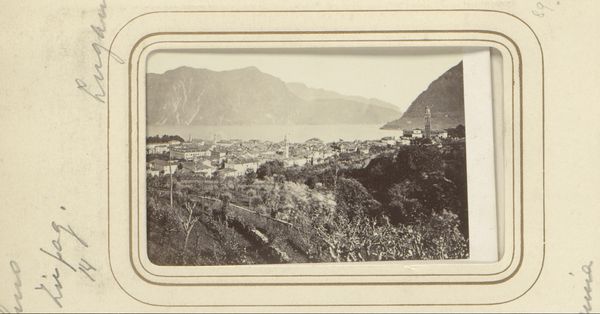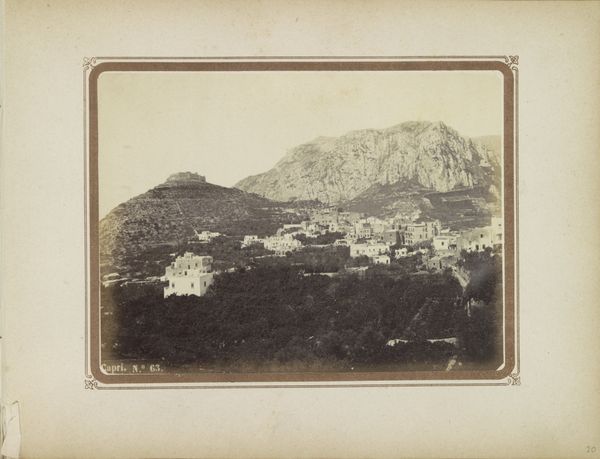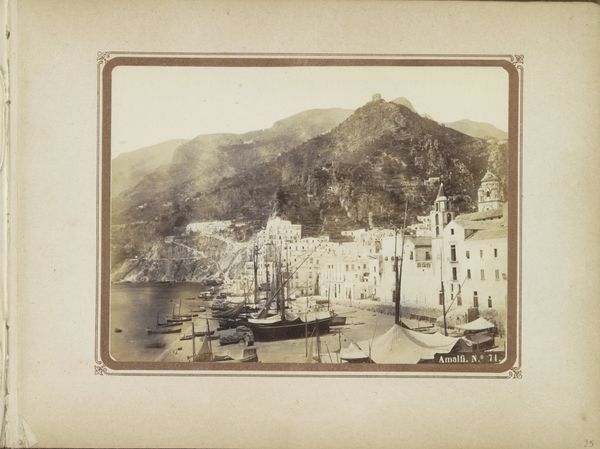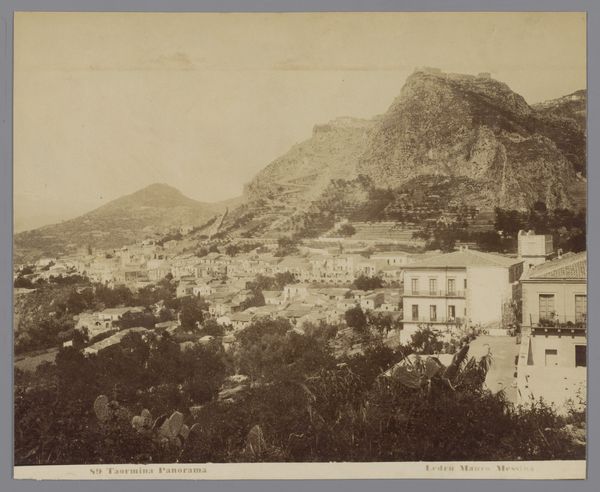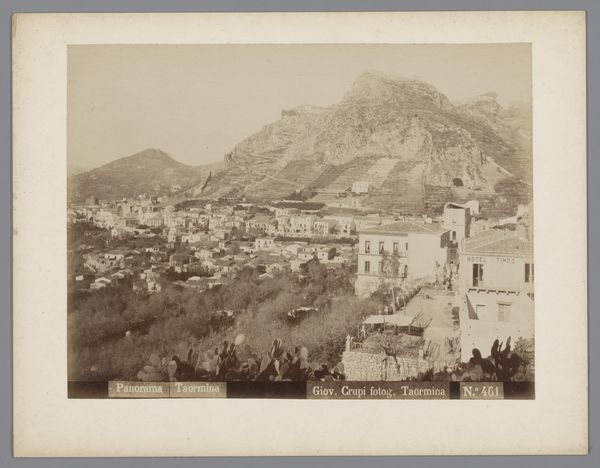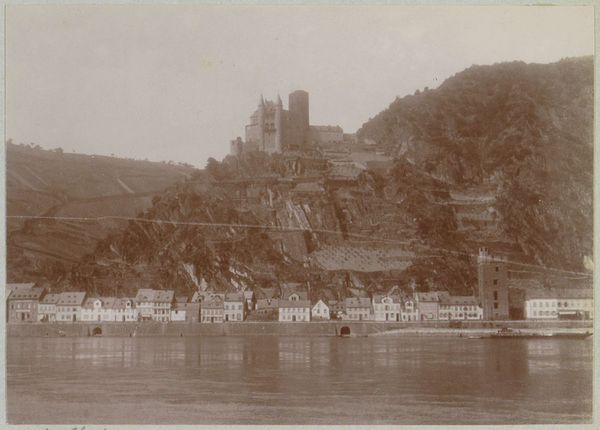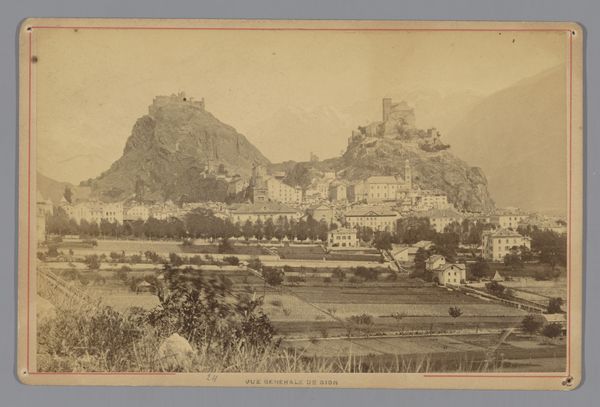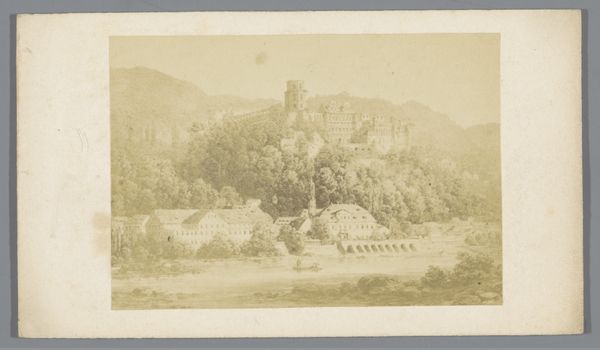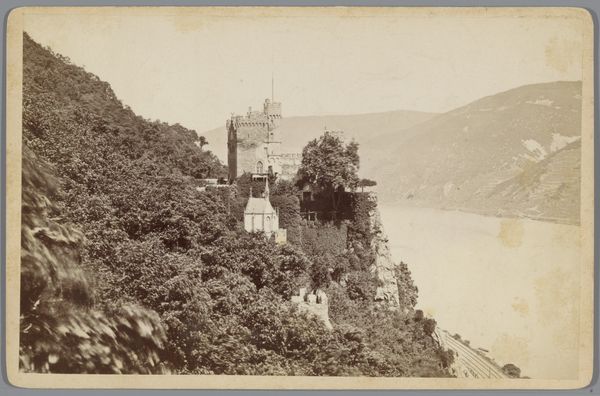
Dimensions: height 103 mm, width 143 mm
Copyright: Rijks Museum: Open Domain
Curator: Before us we have "View of the Ruins of Katz Castle and St. Goarshausen," a gelatin silver print from 1878 by Sophus Williams. What's your immediate reaction? Editor: The first thing that strikes me is the stark horizontality of the composition. It’s almost severe. The calm water mirrors the town and the imposing hillside in the background. The artist created a rigorous structure by layering distinct tonal bands. Curator: Indeed. The stillness and overall muted sepia tone also speaks to the Romanticism inherent within depictions of ruins. We should think about the significance of these kinds of representations in relation to power, colonialism, and nationalism. The image romanticizes a German landscape, inviting reflection on Germany’s past and identity. Editor: From a purely formal perspective, the artist has masterfully controlled the tonal range within that limited palette. See how the castle ruins—the nominal subject—are echoed in miniature by the town huddled at the water’s edge? A semiotician would have a field day tracing that relationship of power, distance, and diminishment. Curator: Absolutely. It reflects a deep fascination with decay and impermanence and an idealization of an untouched, majestic landscape that elides questions of labor and class. Are there visible people? The landscape is literally shaped and structured by people, evidenced in this terraced hill with agricultural use. The frame excludes those. Editor: I see your point. The composition’s focus on horizontality and tonal control creates a visual harmony that subtly masks any signs of social stratification or hardship. However, even in its seeming objectivity, the photographer can never be a truly neutral observer, so any claims of a deliberately neutral depiction have to be regarded with a heavy dose of skepticism. Curator: Right, and it's necessary to view images such as this as embedded within complex power dynamics and coloniality. It requires critical dialogue with its history of representation. Editor: A point well taken. It’s precisely the interplay of form and historical context that ultimately determines an artwork’s continuing resonance, I suppose. Curator: Indeed, I hope the listeners reflect on how deeply connected the aesthetic is with social conditions.
Comments
No comments
Be the first to comment and join the conversation on the ultimate creative platform.

